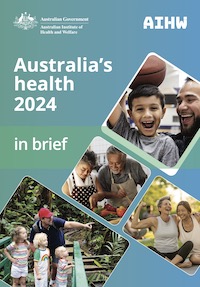Health policy
Covid is largely behind us, but there’s still huge pressure on public hospitals
It is hard to recall a time when public hospitals haven’t been struggling to keep up with demand, such is the nature of health care.
But each year the pressure on public hospitals intensifies, as Martyn Goddard writes in his Policy Post The time-bomb under every state budget.
Our ageing population is one source of that intensifying pressure. That is unavoidable.
Another is a general pressure to do more with less. In most states public hospitals have been able to cope by improving efficiency, but as Goddard explains, the easy efficiency gains have been achieved, and there aren’t many more to be found. He explains why some states, particularly the larger states, have done better than others in meeting what is known as the “National Efficient Price” per acute separation.
Then there is a shortage of GPs, which is putting pressure on emergency wards, and which is also resulting in patients developing conditions requiring hospitalization, which could have been avoided had they received treatment earlier.
One way to gain a few years of eased pressure, he explains, is to provide a way out of hospital for patients who need care but not at the intensity provided in an acute care hospital. That would free up many hospital places, and the economics are straightforward, because the capital costs of building such facilities would soon be covered by the savings from moving these patients to an environment with much lower bed-day costs.
Governments aren’t making these investments, however, and for this he blames government parsimony. Governments are borrowing to fund recurrent costs, but they are reluctant to borrow to fund small capital projects with sound returns, such as low-intensity health care accommodation. That stems from governments’ obsession with fiscal cash flows, rather than sound economic management.
If we could build such facilities, and solve the GP shortage problem, there would remain the demographic pressures and the inevitability that health care is bound to become more expensive in real terms over time. That’s because it’s skilled-labor intensive, and as a human service business it does not enjoy the productivity gains to be found in other industries. (That’s known among economists as the Baumol effect, after the economist William Baumol.)
If we are to sustain standards in our public hospitals we have to pay more tax. Some on the “right” suggest that an alternative is to rely more on private health insurance, but private insurance is just another form of tax, which is more expensive to collect and less effective in controlling providers’ costs than the public revenue system. One reason public hospitals are stretched is that private health insurance has allowed specialists to set high prices in the private sector, which public hospitals have to match.
Years of conditioning by Coalition governments have made it near impossible for governments or public policy advocates to call for more tax. But perhaps timid governments could look at what has happened in the UK, where austerity policies, of the type being advocated by our Coalition opposition, have contributed to that country’s government suffering a resounding defeat. The Conservatives’ treatment of that country’s National Health Service has been a major issue in their election.
A snapshot of our nation’s health
We are well served with data on health and health risk factors, but to make sense of it all we have to dig through publications of the Australia Institute of Health and Welfare (AIHW) and the ABS, as well as numerous state government publications, and research papers by university staff.

The AIHW publication: Australia’s health 2024 in brief, is a reasonably concise document covering basic health data. (For researchers more detailed data is available on the AIHW website.)
Phoebe Roth and Matt Garrow of The Conversation have provided an even more concise presentation in a neat infographic Australia’s health visualised, having pulled together findings from the AIHW report.
It takes only a few minutes to scroll through the infographic to get a broad understanding of our nation’s health – an impression of our general health, our life expectancy, our most common illnesses (including mental illness), our risk factors such as obesity and smoking, and the health of First Nations Australians.
The ABC’s Ahmed Yusuf has a post covering one aspect of the AIHW’s findings, an apparent fall in life expectancy, probably influenced by Covid-19.